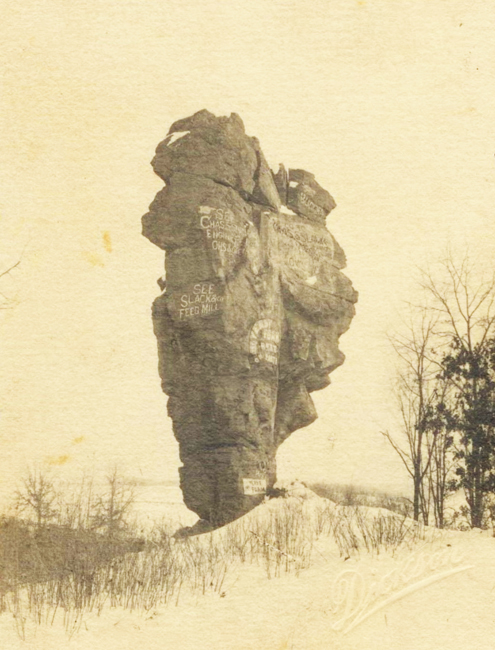Weekly Column
Each week a small segment of Vernon County history is published in the county papers.
For the week of 1/11/2026
by Kristen Parrott, curator
The Vernon County Historical Society is pleased to announce that a new employee, Bridget Van Beckum, has just joined our staff. She minored in history at St. Norbert College in De Pere, and worked for several years at history museums in Appleton. Bridget is taking on the role of assistant curator, as long-time assistant curator Carol Krogan prepares to retire at the end of February. Stop by soon to welcome Bridget!
A couple of new exhibits opened at the Vernon County Museum and History Center just before the holidays. A new exhibit about rock formations in Vernon County is located on the museum’s first floor, across from our U.S. 250th introductory display. One of the themes we are focusing on during the U.S. 250th is the “Power of Place”, and this rock exhibit explores that idea. The display looks at local rock formations, such as Monument Rock near Liberty Pole, and also features some regional rock samples, including a stromatolite that formed near Newton over 1 billion years ago.
In the temporary exhibit room on the second floor, another new display for the U.S. 250th is now on view. Reproductions of old maps of the land now called Wisconsin line one wall, starting with a 1778 map. Several pieces from the Helen Huschka glass collection fill cases around the room, including three pieces depicting George Washington.
Also from the Huschka collection are two porcelain plates produced for the U.S. bicentennial by a French porcelain company. These two plates feature images from the life of the Marquis de Lafayette. Lafayette was a wealthy Frenchman who, inspired by the pursuit of liberty, joined the American forces in 1776 to fight against England. He arrived in the U.S. at age 19, and led American and French troops into battle several times during the American Revolution, becoming one of George Washington’s most trusted generals.
The exhibit halls are warm and comfortable on a cold winter’s day, and you are welcome to come take a self-guided tour, or call us at 608-637-7396 to arrange for a guided tour for a group. Winter hours are Tuesday, Wednesday, and Thursday, 11AM to 4PM, or by appointment.

Historic photo of Monument Rock, near Liberty Pole.

For the week of 1/4/2026
by Kristen Parrott, curator
Happy New Year! The Vernon County Historical Society looks forward to a year of growth and positive change. As always, we will have a full calendar of events, classes, programs, and more, throughout the year.
Our public history programs are usually held on the first Tuesday of the month, for six months of the year starting in February. These programs are still being arranged, and we will begin advertising them soon.
The monthly genealogy class is held on the second Thursday of the month for most months of the year, also starting in February. The topics for each class are currently being lined up.
2026 will be a big year for all history-lovers because of the commemoration of the 250th birthday of the United States. The official celebration will be held on July 4 all across the country, but we will be examining themes related to the 250th all year. These themes include “We the People”, “Unfinished Revolutions”, “Power of Place”, “American Experiment”, and “Doing History”. Our commemoration will include exhibits, programs, and events, including the Strawberry Shortcake Social on July 4 at the historic Sherry-Butt House.
One of our challenges for 2026 will be to raise more money for operational costs. A sizable portion of the Vernon County Historical Society’s annual income comes from Vernon County, which has supported us since the 1950’s. We are very grateful for that support. The amount of our county support has been cut by 25% for 2026, so we will need to find additional ways to raise money on top of all of our current fees, sales, fundraisers, etc.
In the new year, we look forward to discovering all of the improvements generated by now having heat and air-conditioning on the upper floors of the museum building, from staff being able to work on exhibits year-round to school groups being able to come visit in the dead of winter. Installing an HVAC system upstairs was the major accomplishment of 2025, and we hope that it will benefit the whole community.
Join us in 2026 for a year of fun and learning!

The previous two articles:

 MENU
MENU